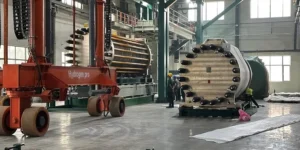Netherlands cuts environmental tax benefits for hydrogen-powered equipment and H2 fuel supply

Companies investing in hydrogen-fuelled machinery, as well as H2 supply for vehicles and ships, storage tanks, and dual-fuel trucks and tractors, will no longer be eligible for environmental tax benefits in the Netherlands this year.
The Netherlands Enterprise Agency (RVO), the executive body of the Dutch Ministry of Economic Affairs and Climate Policy which is responsible for adjusting the so-called “Environmental List” of green assets eligible for investment tax credits, has cut 108 and substantially changed 112 different categories, in part due to stricter EU rules for state aid.
An amendment to the EU’s General Block Exemption Regulation for state aid, published in June last year, tightened the scope of support for investments into equipment, machinery and infrastructure using or transporting hydrogen only if it qualifies as renewable, or otherwise produced from electrolysis with a 70% reduction in greenhouse gas emissions compared to fossil fuels.
However, the RVO notes that the Netherlands’ environmental tax benefits — the Environmental Investment Allowance (MIA) and the Random Depreciation of Environmental Investments (Vamil) — do not currently have a mechanism to confirm that only green H2 is being used, resulting in these categories being scrapped.
Meanwhile, the tightened EU state aid rules do not require investments into hydrogen-powered vehicles to prove that they are only running on renewable hydrogen—likely because the restriction does apply to refuelling stations.
As a result, the Netherlands will continue to offer tax benefits on cash spent towards cars, vans, buses, and trucks that only run on H2, although dual-fuel options are not eligible, as long as none of the investment goes toward a refuelling site.
Article continues below the advert
Companies will also be able to claim MIA and Vamil on hydrogen propulsion systems for ships other than fishing vessels, as well as retrofitting projects replacing diesel engines in existing trains with battery packs with or without a fuel cell.
However, given the RVO expects claims for the MIA tax credit to exceed the budget set in 2023, it has reduced this year’s available benefit for electric or hydrogen-powered trucks.
While electric taxis have been cut from the list — the RVO says “the additional cost of these taxis compared to non-electric taxis is too small to continue to encourage them with tax benefits” — hydrogen-powered options will still be eligible for the tax benefit as they have remained expensive.
But given companies cannot also claim MIA or Vamil on refuelling stations — of which the Netherlands only has 17 compared to more than 170,000 electric charging points — this could result in disruption of supply, as has been seen in Denmark and South Korea.
The Dutch government plans to launch a separate €150m ($164m) Hydrogen in Mobility Subsidy Scheme, which will provide grants of up to €300,000 per vehicle and €2m per filling station, in a bid to meet EU-wide targets set out by the Alternative Fuels Infrastructure Regulation passed last year.
However, the amended EU state aid rules could mean that this will come with strings attached on refuelling stations to prove the supply of renewable H2 in accordance with definitions set out by the delegated acts before they can receive government funding.





